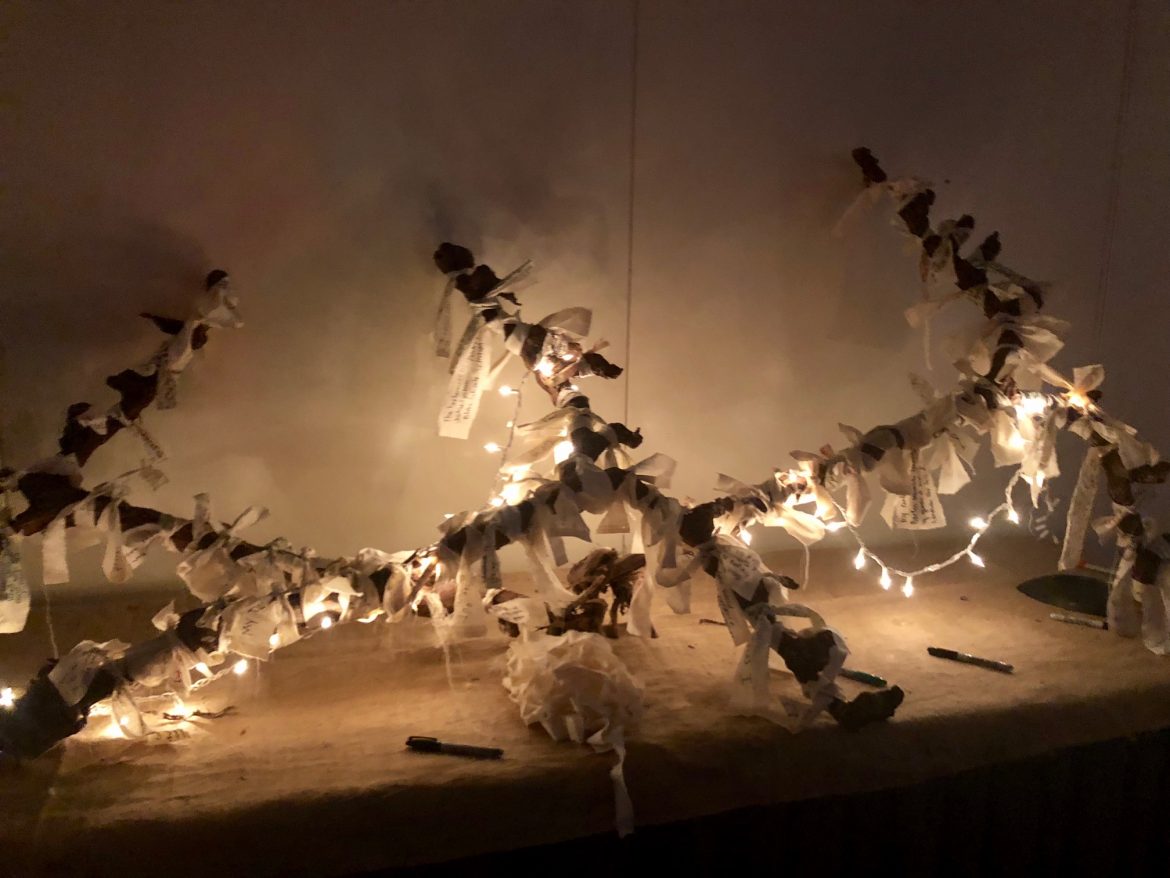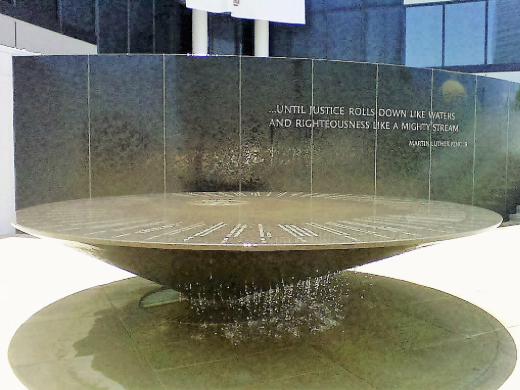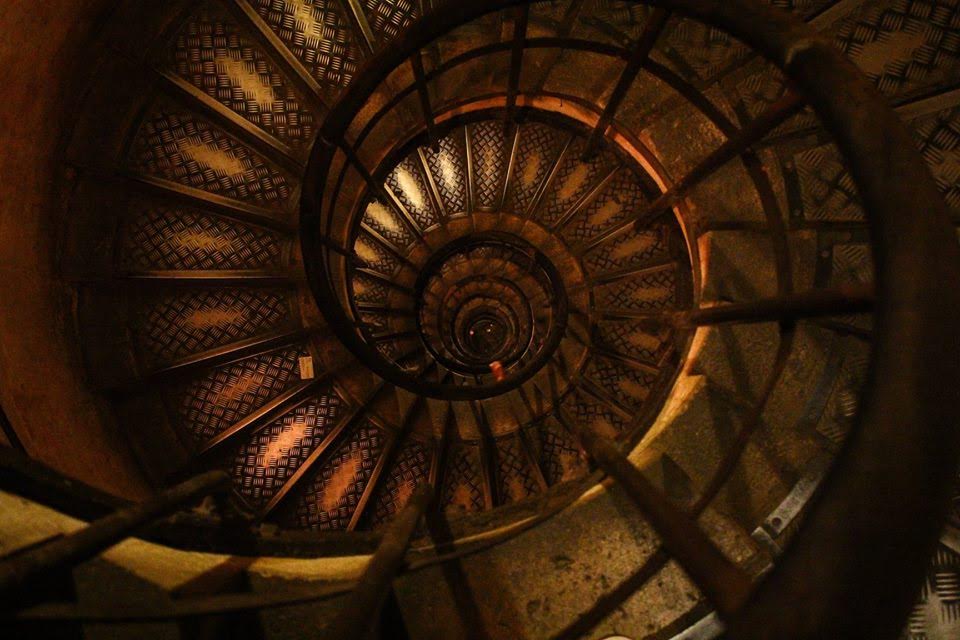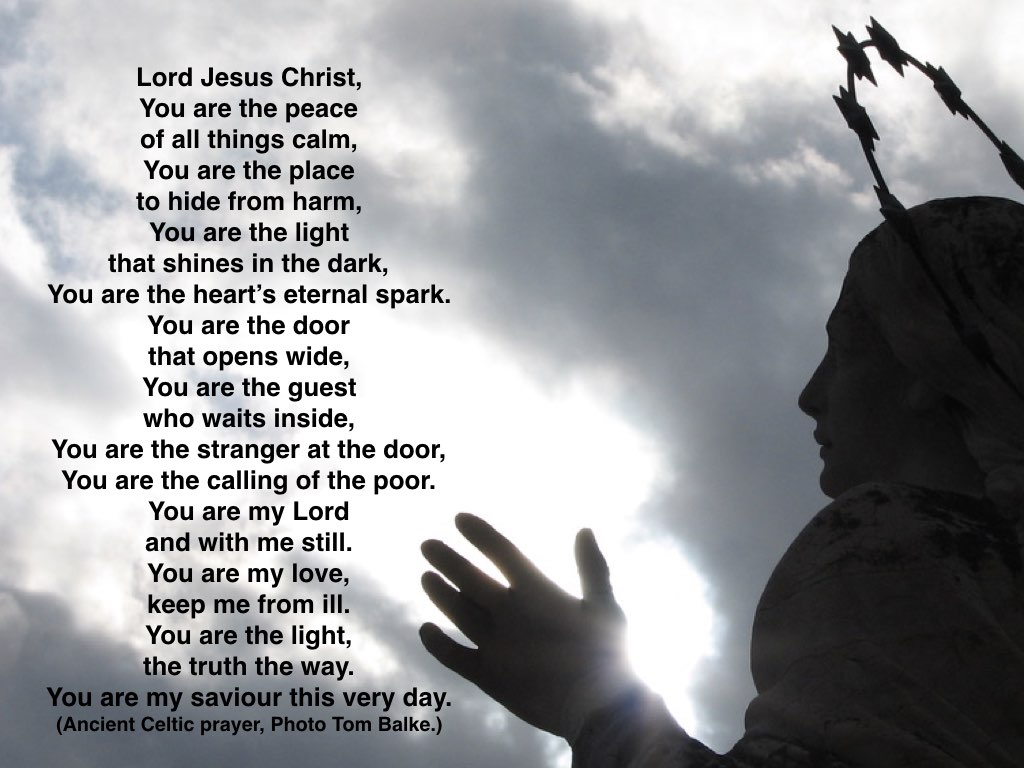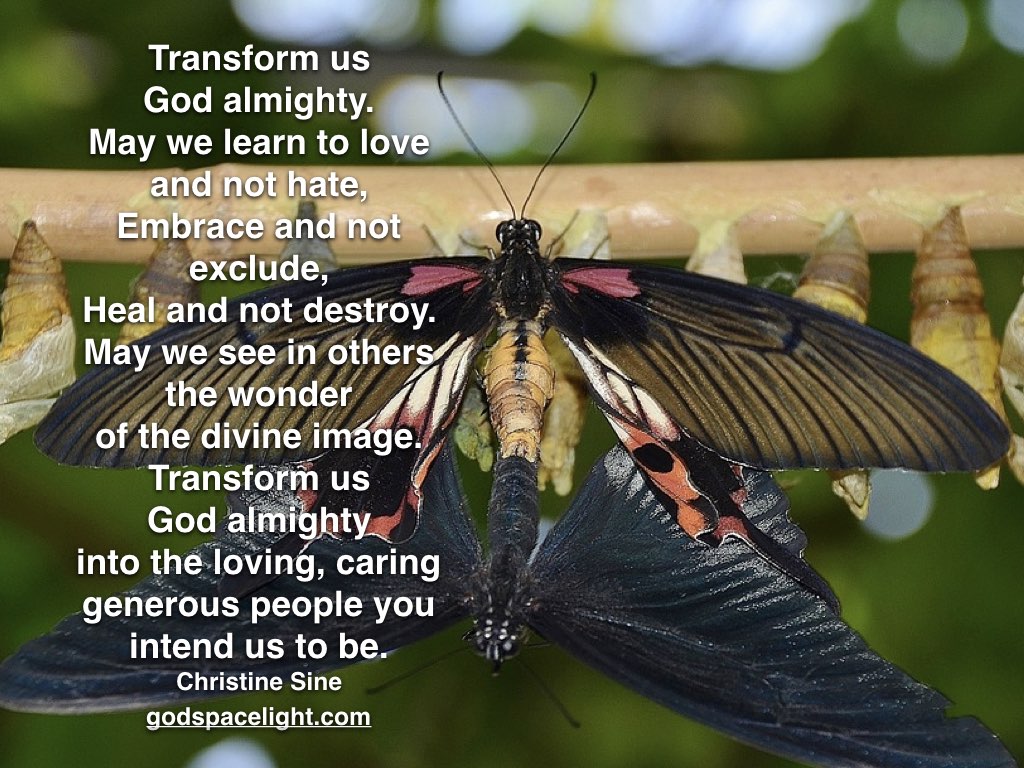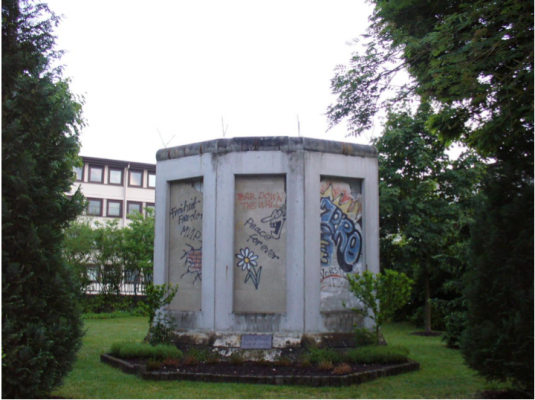by Lilly Lewin
It’s been another week of hard things…
The horrific mass shootings at the Mosques in New Zealand
Extreme Flooding in the Midwest here in America
And the devastation of Cyclone Idai in Mozambique and Zimbabwe
I’m feeling the weight, the heaviness of these tragedies, along with the pain of several friends with chronic illness, some who’ve lost of parents, and the threats of cancer.
Grief and pain often happen in waves that wash over us, and we need help and time to process it.
Too often we don’t allow for the process of grief
In church or on our own, we often do not allow ourselves to really grieve the loss of a job, a dream, a relationship, a loved one, but rather feel like we need to trudge on or put on our Christian happy face. It’s important that we create opportunities and give ourselves and our communities person to feel their pain and grieve their losses.
It’s ok to lament and not just celebrate together when we come together for worship.
I designed a prayer station this past year for the National Youth Workers Convention to allow youth workers to grieve. I reimagined the station again in February for the students at the United Methodist conference called Warmth in Winter. The pain and loss that were recorded on the muslin strips were intense. You might use this station with your church community or small group this week or in the future. It can be used as a corporate response. You can pass around the pieces of muslin and pens and have everyone respond together and then bring up their grief prayer and put them on to the grapevine or on a cross as they come up for communion. Or you can set up the station or multiple stations around the worship space to be used after the sermon or following communion. You could use this station as a part of your Holy Week services too.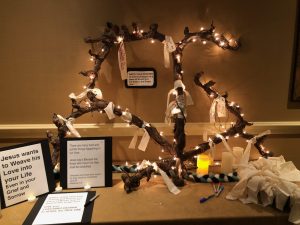
Grapevine Grief Station:
Supplies:For this prayer station you will need strips of muslin, enough for everyone in your group. approx. 12 inches x 3 inches but they can be thinner.
sharpie markers for writing prayers
a grapevine garland or a wooden cross
(we used grapevine “t-vines” from a vineyard because they look like a cross.)
Action: Participants will consider what they are grieving, what pain they are feeling and write this on a pice of muslin. Then they will tie the muslin on to a grape vine garland or to a cross and give the pain to Jesus, the true vine.
Signage/Directions:
Jesus wants to Weave his Love into your Life Even in your Grief and Sorrow
There are many hard and painful things happening in our lives.
Jesus says Blessed are those who mourn for they shall be comforted.
“Blessed are those who mourn, for they shall be comforted.” JESUS
Matthew 5:4
WRITE YOUR PRAYERS of Grief and Regret on a piece of Muslin and
Tie them to the Grape Vine
GIVE your
LOSS/GRIEF/DESPAIR
to JESUS, the TRUE VINE
WRITE YOUR PRAYERS of Grief and Regret on a piece of Muslin and Tie them to the Grape Vine
HINT: you can get grapevine garland on Amazon or at Michaels Crafts
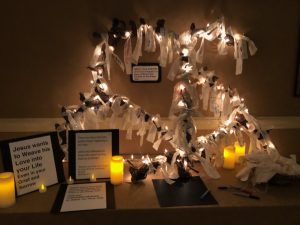

Ways you can help the victims of the tragedies:
If you want more information on how you can respond to the needs in Africa after the cyclone, this article from the NY Times has several links.
Help the flood victims in the midwest here.
Resources to help you with Grief:
Two of my friends have written amazing books to help us grieve.
Beth Slevcove: Broken Hallelujahs.
Larry Warner Journey with Grief: Navigating the First Year
 freerangeworship.com prayerhearts from 40DAYS toward Love found in store.
freerangeworship.com prayerhearts from 40DAYS toward Love found in store.
By Michael Moore —
Love, Justice, and Mercy… these are qualities that are much needed in today’s world. The first time I visited the Civil Right’s Memorial outside of the Southern Poverty Law Center in Montgomery, Alabama was in 1990 when I was attending a course at the USAF Chaplain Service Institute. The monument (designed by Maya Lin who also designed the Vietnam Veteran’s Memorial in Washington, DC) reminds me of the dream of Dr King and the call of Jesus to be instruments of God’s blessing and reconciliation.
As I visited with the young Security Guard that evening, I had a lesson in the experience of hatred and fear… this was, of course, decades before the #BlackLivesMatter movement. He described to this naive young Minnesotan how the Center which fought for the rights of Black men and women in the South (and also in the rest of the US) had glass windows that were bomb-proof, not just bullet-proof! He told me about the cars that would occasionally drive by slowly with white racists who sought to intimidate him. It truly was an eye-opener for me.
A few weekends ago, my wife and spiritual partner Denise and I co-led an Officer’s Retreat for the Ruling Elders and Deacons of Presbyterian Community Church of the Rockies in Estes Park, Colorado. One of the myriad of subjects we explored was the Book of Confessions which is Part I of the Presbyterian Church (USA)’s Constitution. Two that hit close to home given the current environment (Walls, Barriers, Hatred, and Fear-Mongering)) in parts of the US and World were the Belhar Confession and the Confession of 1967. In South Africa, where the Belhar Confession was born, Apartheid was the law of the land. In the US, Racism and Segregation were the law of much of the land and lynchings were the methods of such Terrorist Organizations as the KKK.
It was in such a time that the voices of prophets such as Nelson Mandela and Martin Luther King, Jr arose. What struck me particularly about Dr King’s voice was his commitment to Non-violence. In examples such as Dr King’s, I saw the difficult challenge of the words of Jesus from the Gospel Reading for the Seventh Sunday after Epiphany lived out — But I say to you that listen, Love your enemies, do good to those who hate you, bless those who curse you, pray for those who abuse you. If anyone strikes you on the cheek, offer the other also; and from anyone who takes away your coat do not withhold even your shirt. (Luke 6:27-29)
Today so much of christianity (lower case is intentional) does the polar opposite of what Jesus calls us to do and to be. The racist terrorists of the KKK called themselves christians (again, lower case is intentional) yet they were filled with hatred for anyone who was different from them.
The message I hear from the Lord is not one of exclusion or hatred or fear. It is a message of Love, Justice, and Mercy. As I consider the Contemporary Confessions of the PC(USA), I think of movements for inclusion… movements for love versus fear or hatred… movements which seek to bind us together in the love of God.
At the closing worship for our Retreat, I shared this prayer of Dr King’s: We thank you for your church, founded upon your Word, that challenges us to do more than sing and pray, but go out and work as though the very answer to our prayers depended on us and not upon you. Help us to realize that humanity was created to shine like the stars and live on through all eternity. Keep us, we pray, in perfect peace. Help us to walk together, pray together, sing together, and live together until that day when all God’s children — Black, White, Red, Brown and Yellow — will rejoice in one common band of humanity in the reign of our Lord and of our God, we pray. Amen.
May God give us the strength and resolve, dear reader, to be that difference in this world filled with hatred and fear. May we live out the vision of such prophets as Dr King. And may we work towards the day when, as the prophet Amos said in one of Dr King’s favorite passages from Amos 5:24 — Justice rolls down like waters and righteousness like a mighty stream.
By Ana Lisa de Jong —
I walk the labyrinth to you.
Catching sight of your smile,
as though across a room.
I make my way but
my feet are slow,
tied to the ground.
While you are there, I realise I am far,
and the labyrinth that I walk
turns me away,
that I must cast
a look behind,
to see your face.
And I must go back
to where I begin,
again.
But you’re still there,
your gaze a beacon of light
in which I’m held.
And as I walk,
I realise both in shadow
and in sun,
this path is a spiral
leading on,
though I might appear to retrace my route.
And my heart all the while
is safe in yours,
in this grace which surrounds.
And I see how
this centre I’m seeking,
this face I love
is my own looking back
in the bosom
of your love.
Ana Lisa de Jong
Living Tree Poetry
I came across this beautiful ancient prayer in my files today and could not resist sharing it again. It is such a soothing prayer. Take a couple of deep breaths in and out. Sit quietly in the presence of God and repeat it several times, allowing the peace of God to seep into your soul.
by Fran Pratt
God, for centuries we have imagined that between us and you
Were distance and difference,
Silence and judgement,
And ultimately, walls.
But now we’re learning that wall-building
Is a uniquely human response
To fear,
To pain,
To vulnerability,
To a feeling of separation.
If we can forget the idea of separation,
Perhaps we can stop building walls on its behalf.
Oh God, may we let love have free reign
To build something more imaginative than walls.
See, we think our separateness is a given,
But you are constantly urging us toward a different perspective:
That nothing can separate us from you
Nothing created, nothing imagined, nothing contrived –
That you are, always and forever, for better and for worse,
In every circumstance, in every situation
Together with us.
You are God-With-Us.
And that togetherness, that persistence,
That in-it-for-the-long-haul relentless with-ness,
Is part of your personality, a characteristic of you;
Part of your everlasting love,
That is always building new spaces
And breaking down walls. Amen
by Christine Sine
Jesus has come to transform people not to exclude them (Richard Rohr Wondrous Encounters 21)
It was these words of Richard Rohr that held my attention this week long before the tragic shootings at the mosques in Christchurch New Zealand. This horrific event shook many of us up with the urgency of our need to embrace those who have often been excluded. It was these words that revolved in my mind as I broke down the second wall in my Lenten garden today. So many thoughts have tumbled through my brain since then.
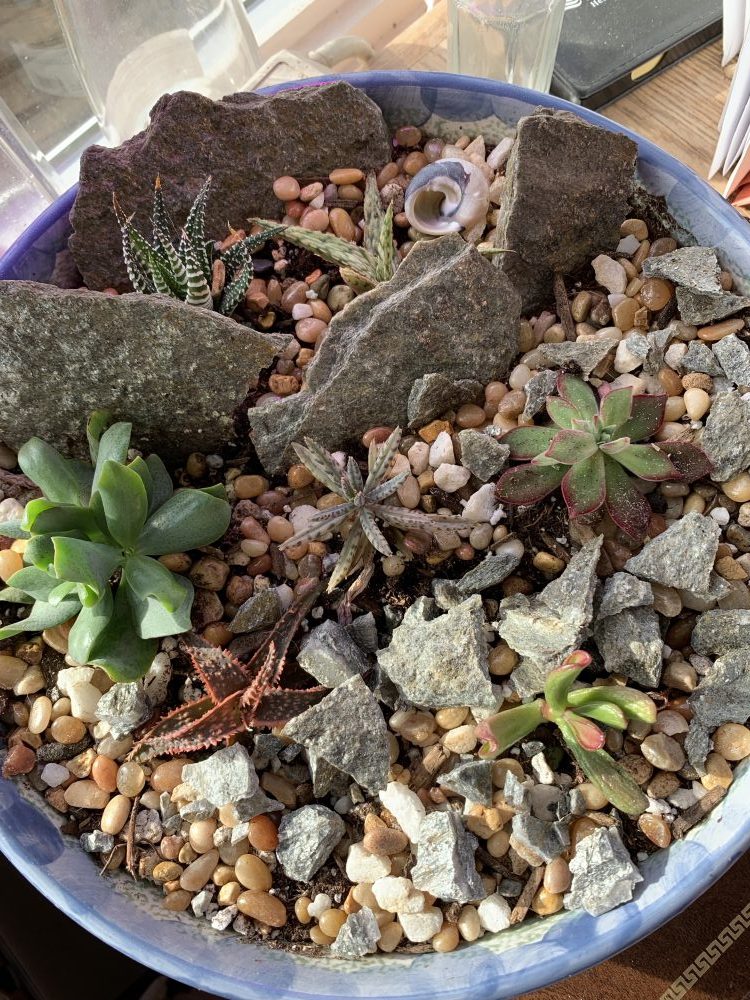
Lenten garden with 2 walls broken down
How often I wonder do we create walls with our hate, our greed, our violent language and our narrow mindedness? We love to get caught up in the boundaries we feel the Ten Commandments set for so many of us. They can make us feel that our moral codes make us acceptable to God to the exclusion of others. Sometimes they make us feel justified in hating those who think, act or look differently than us.
Become Like Jesus
This Jesus we follow often pushed beyond the “acceptable” boundaries of Jewish behaviour. He included the misfits and the outcasts, the despised and the outsiders, the vulnerable and the untouchable in his embrace, together with the wealthy and the healthy and the acceptable. He invited us all to sit down together, to eat with him, to follow him and to be a part of his family so that they could transform each other.
This is the kind of God I can believe in. The God who in the person of Jesus Christ embraces the stranger, the immigrant, the excluded and the rejected and expects his disciples to do the same. In the process I believe all of us will be transformed.
Transform Your Attitudes
It is easy for all of us to create walls of fear. Fear that we will not have enough for our future, fear that someone else will invade our land and take what we have, fear that our world will change or that climate change will destroy the environment. Our fears may differ but we all struggle with fear.
More than anything we need to see fear transformed into trust. And trust in God opens new possibilities. One of our biggest struggles is trusting that just as God is working within us to unveil the divine image so God is working in the lives of those around us. Yes, even those of different race or faith or social strata, or sexual orientation. Make no mistake, all of us do need to be transformed and we shouldn’t seek to transform others until we have been transformed into the loving, caring, generous and forgiving person God intends us to be. Transformation is God’s business. The only person we can take responsibility for is ourselves.
As I think about this today, I am reminded that when I visited St Catherine’s monastery in the Sinai desert, the oldest monastery in existence, I was astonished to find a mosque in the middle of it. Evidently Bedouin tribes would attack the monastery so Muslims, wanting to protect the Christians built a mosque in the monastery, making it into a sacred space. Wow! I am reminded too that after the September 11th terrorism, Christians formed a circle of protection around our local mosque and prayed for their brothers and sisters of Muslim faith. The Muslims in return started holding an annual feast to which all were invited. Maybe it is time for Muslims and Christians to learn to protect each other again. Maybe it’s time for us to find new ways to gather together in hospitality rather than hostility and reach for understanding and acceptance rather than rejection and exclusion.
Transform the Way You Relate

From We Welcome Refugees
This beautiful image from the Facebook page We Welcome Refugees is a beautiful one to meditate on as we consider our need to embrace rather than exclude. What if we replaced hostility with hospitality, criticism with concern, greed with generosity and consumption with stewardship? Lent is a great time to reach out to those in our neighbourhoods who are different. Think about inviting a family of another ethnicity, religion or sexual orientation over for dinner, not with the desire to see them converted but with the desire to develop friendship and understanding and acceptance.
Jesus invites all of us to reach beyond our comfort zones and embrace those we have previously excluded.
Transform the Way You Act on Social Media
One of the horrific things about the attacks in Christchurch was that they were live streamed on Facebook with the expectation that the video would go viral as people around the world watched to massacre. It is easy for us to say “I would never do something like that”, yet sometimes even though we do not live stream our hatred, we can incite hatred and violence in others by the language we use. It horrifies me to see how often people of faith respond with hateful and sometimes violent language to those whose viewpoints they disagree with.
I think that all people of faith should choose language that embraces, not excludes, reaching out with acceptance and love to those they disagree with. What if we resolved to only make comments that built up others and showed them love and acceptance? What if we left the transformation work up to God, and trusted in God to change people’s hearts and minds, not into the people we want them to be but into the people God wants them to be?
What is Your Response?
Take time today to contemplate your own responses to those who are different from you – be it religious differences or racial differences or differences in sexual orientation. How loving are you towards these people that you have excluded from your circle? In what ways could you work this week to change that?
By Michael Moore —
On November 9th, 1989 the Wall which symbolized The Cold War came down. Actually, the Wall remained but the gates were opened between East and West Germany. The official demolition began in 1990 and this section pictured above stands at Ramstein Air Base where I spent a fair amount of time as a United States Air Forces in Europe Chaplain Corps Inspector from 2005-2008. I remember the incredible feelings that swept throughout the world and in my own heart when the wall came down. I also remember the feelings I had as a young USAF Chaplain when our nuclear weapon loaded bombers stood down from their 24-hour alert status at the end of the Cold War in 1991. Walls were coming down and there was even a discussion about a Peace Dividend. Sadly, walls and weapons are racing up again as the nation and world retreats behind walls of fear and mistrust.
So what does this have to do with Saint Patrick, the patron saint of Ireland? Patrick was a young man who was kidnapped by Irish pirates in Scotland and sold into slavery. He was a herdsman/shepherd in Ireland for six bleak years. During that time, he turned to his faith to sustain him. He was able to escape out of bondage and return home to Britain. After a period of time where Patrick wrestled with God’s call to ministry, Patrick returned to the Island of his enslavement. He came, not to build walls, but rather to tear down walls as he brought Christianity to pagan Ireland. I can’t even imagine the struggle within his heart as he wrestled with God’s call to return to Ireland. Despite having the odds stacked against him including brief periods of imprisonment at the hands of the Druids and local chieftains, he was successful in building bridges between the Celtic Pagan faith and Christianity. The walls were indeed torn down as Bishop Patrick shared the Gospel with the people of Ireland who had once enslaved him. Instead of bringing a sword, he brought a message of peace.
Sadly, Saint Patrick’s Day is celebrated today as a day to drink too much, eat too much, and basically do just about the opposite of what Patrick must have taught centuries ago. Yet, for some reason, as I contemplated this blog for GodSpace, I saw the connection between tearing down walls and building bridges. As President Reagan said to Prime Minister Gorbachev, “Mister Prime Minister, tear down this wall,” at the end of the Cold War, I sensed the call of God to Patrick, “Patrick, tear down the walls of hatred and fear in Ireland. Bring my Good News to the Island and its people.”
As a Christ-follower, I believe that I am called to be a part of the mission to tear down the walls which have been thrown up in the name of fear and so-called religion. As Patrick came to Ireland to build bridges, aren’t we who claim the name of Christ called to build bridges and tear down walls?
As an Amazon Associate, I receive a small amount for purchases made through appropriate links.
Thank you for supporting Godspace in this way.
When referencing or quoting Godspace Light, please be sure to include the Author (Christine Sine unless otherwise noted), the Title of the article or resource, the Source link where appropriate, and ©Godspacelight.com. Thank you!

